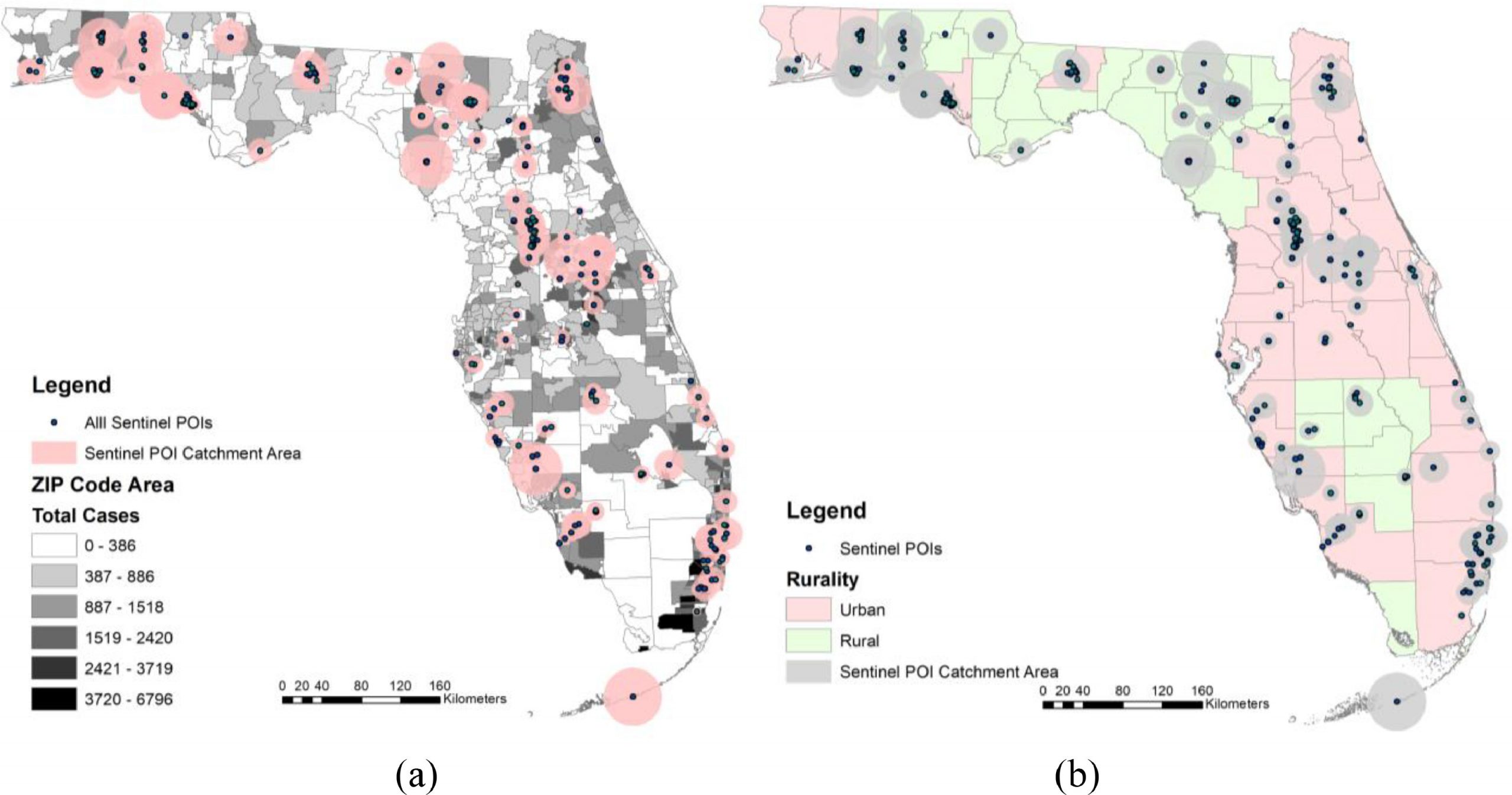
Du, F., & Mao, L. (2024). Identifying Points of Interest (POIs) as sentinels for infectious disease surveillance: a COVID-19 study. Spatial and Spatio-temporal Epidemiology, 100691, https://doi.org/10.1016/j.sste.2024.10069.
ABSTRACT: Traditional surveillance relies on medical facilities, such as clinics and laboratories, as sentinels to monitor disease activities. Few studies have investigated the feasibility of using Point of Interests (POIs) as sentinels for disease surveillance. POIs, such as restaurants, retail stores, and churches, are places where people often interact with one another and thus play a critical role in transmission of infectious diseases like influenza and COVID-19. To fill this gap, we proposed a method to estimate people’s potential crowdedness at POIs and explored its utility as an early indicator to signal local disease outbreaks. In a case study in Florida, USA, we utilized weekly foot traffic data at 0.3 million POIs to calculate their weekly crowdedness, and tested local correlations between the crowdedness of each POI and its surrounding COVID-19 incidences with different time lags. We identified 261 POIs as potential sentinels that could signal the risk one to three weeks ahead of disease outbreaks. Most of these sentinel POIs provided food/drink services, ambulatory healthcare and religious/civic services. They were characterized by a relatively large group of customers and a stable patronization over time. This research provides new insights into improving current disease surveillance systems by incorporating more diverse and widely distributed POIs.